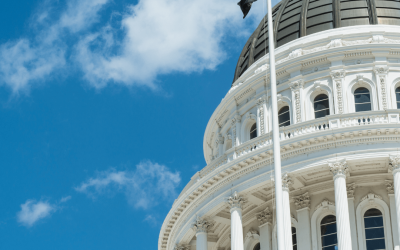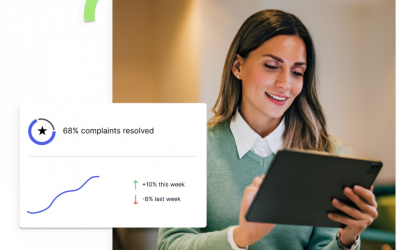Total rewards optimization traditionally uses benchmarking and industry trends, which rely on external data and an outward perspective as you compare your compensation and benefits packages to competitors. Through the power of people analytics, however, you can maximize total rewards based on your own organization’s data. With a deeper understanding of your unique workforce, you’ll be able to align your total rewards strategy with the needs and preferences of your employees and talent pool. This fosters a culture of holistic well-being and engagement that drives organizational success.
Below, we’ll discuss four ways high-performing organizations use total rewards analytics to maximize the impact and value of their programs.
1. Optimize benefits based on value
Aligning the preferences of your workforce with your rewards strategy allows you to get the greatest impact from your benefits, improving both employee engagement and garnering a better return on investment.
With comprehensive people analytics, you can gain granular insights beyond benefits enrollment and participation, including that benefit’s impact on engagement, turnover, and recruiting. This data-driven approach allows you to identify which benefits are most impactful and allocate resources accordingly.
Another insightful method of benefits optimization is directly involving employees in the decision-making process. Using tools like employee surveys and conjoint analysis allows you to gather insights on which benefits are most valued by your workforce. For example, employees can rank existing benefits based on their personal preferences, providing you with valuable feedback on the perceived utility of each reward. These surveys also serve as an avenue for employees to propose additional benefits they’d like to see included in the reward package.
After combining HR data with people analytics insights, employers can allocate budget and communication efforts towards the benefits that are most valuable to their employees and also align best with their business objectives. This ensures resources are being used wisely and, more importantly, promotes a culture of mutual respect and engagement.
2. Foster engagement and a culture of well-being
Cross-evaluating HR and workforce data can uncover insights into metrics that are more challenging to quantify, like organizational culture, career progression, and management effectiveness.
Consider, for instance, the role of managers in employee engagement. Managers are instrumental in setting the tone for the work environment and influencing the engagement levels of their teams. Per Gallup, 70% of the variance in team engagement is determined solely by the manager. By investing in your top-performing managers, whether through total rewards, specialized training programs, or other forms of recognition and development, you can yield a ripple effect that impacts the broader employee population.
Leveraging people analytics to identify high-performing managers and understand what drives their success is a strategic approach to maximizing the ROI of your total rewards endeavor. Furthermore, this data-driven understanding can also shed light on career progression paths and the cultural aspects that contribute to a high-performance atmosphere.
Another component of engagement is holistic well-being, which takes into consideration the entire human experience—physical, mental, emotional, social, and financial health. Today’s employees, particularly younger generations, want more than just a paycheck—they expect to feel supported in all areas of their lives. Total rewards strategies can maximize ROI by adopting a holistic approach to well-being, incorporating elements such as mental health support, generous parental leave, fertility benefits, and financial programs to support retirement readiness.
Analytics will help you understand which aspects of well-being are most valued by employees and should be prioritized. By segmenting data across various demographics, you can gain insights into the unique needs and preferences of different employee groups. For example, low 401(k) participation for younger employees could be attributed to high student loan payments. That financial stress could contribute to health issues, dissatisfaction with their employer, and missed days of work. This data-driven approach allows for the creation of personalized well-being initiatives, such as student loan support programs, that resonate with your workforce. Ultimately, greater engagement, productivity, and loyalty will result, enhancing the ROI of your total rewards strategy.
3. Ensure compensation is competitive, sustainable, and compliant
Understanding competitive compensation is another crucial aspect of maximizing the ROI of total rewards analytics. This involves evaluating your organization’s pay data beyond the traditional role, tenure, and geography metrics to include insights that HR has not traditionally had access to, such as gender, 401(k) contributions, performance ratings, etc. In doing so, data consolidation and advanced analytics can empower modern initiatives such as pay equity, pay for performance, and compliance.
For example, segmenting data by demographic allows you to identify unrecognized pay disparities that may exist within your organization. A granular view has the potential to reveal discrepancies across different groups—gender, race, or age—which can then be addressed to ensure fairness and equity in compensation and career advancement.
In addition to demographic data, other metrics such as promotions, tenure, and retention rates should also be considered in conjunction with compensation data. This will help shed light on whether there is a correlation between these factors and pay equity. For instance, if certain demographics are getting promoted less often or have shorter tenures, it could indicate underlying biases that are likely reflected in compensation too.
Beyond most organizations’ desire to be fair to employees, it’s also important to note that pay transparency is increasingly important in the legal landscape, with new laws mandating some level of wage disclosure. For example, the Paycheck Fairness Act in the U.S is aimed at closing the gender wage gap by enhancing legal protections against pay discrimination. The Act proposes that organizations provide justification for any pay disparities. These legal requirements underscore the importance of analytics in maintaining compliance, as a robust analytics strategy can help monitor and document compensatory practices, supporting adherence to pay equity legislation and minimizing legal risks.
According to a study by Ventana Research, 67% of organizations do not currently assess compensation equity across different demographics, which means organizations that do invest in advanced compensation analytics have a competitive advantage over those that do not. Leveraging analytics can empower your organization to identify and reward high-performers and also understand what drives their performance. This not only helps in attracting and retaining top talent but fosters a meritocratic culture where employees are rewarded based on their contributions to the organization’s success.
4. Incentivize productivity and performance
With an increasingly agile workforce and skills-based economy, talent analytics is an indispensable tool in making data-informed decisions. Utilizing robust analytical tools allows organizations to assess employees based on their potential, scrutinizing a myriad of data points such as performance, skills, and future capability.
High performers and individuals with crucial skill sets can be identified through this analytical approach, enabling an organization to invest strategically in these talents. Total rewards strategies can then be tailored to recognize and motivate these key individuals, ensuring they feel valued and engaged.
Concurrently, focused career development opportunities such as leadership programs, skill enhancement trainings, and mentorship initiatives can be rolled out to foster continued growth and progression for these employees. This leads to improved productivity and morale, and it also helps with talent retention and succession planning.
Measuring productivity is a critical aspect of maximizing the ROI of your total rewards strategy, and the method of measurement can vary significantly depending on the job and industry. Regardless, remember to keep the measures fair, transparent, and applicable across the board to ensure that your total rewards strategy continues to motivate and engage your employees. Analytics can play a pivotal role in providing you with the insights necessary to measure and track these productivity metrics with transparency and objectivity.
The bottom line
With comprehensive people analytics data and the right tools, total rewards managers can optimize the ROI of their programs by discovering high-impact opportunities, implementing modern programs tailored to their population, and measuring the effectiveness of program changes.
Connect with ZeroedIn today to learn more about how total rewards analytics can help optimize your program.




